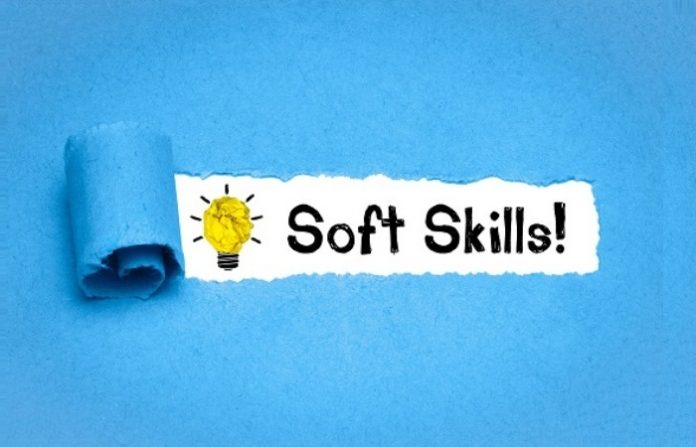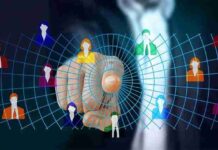Long-term, we must begin to build our internal strengths. It isn’t just skills like computer technology. It’s the old fashioned basics of self-reliance, self-motivation, self-reinforcement, self-discipline, self-command” – Steven Pressfield
The challenge for any Human Resource Management or Learning and Development Team is how to maintain a fine balance between the hard and soft skills of their employees that would be beneficial to both the organization and to the individual as well. Rick Stephens, Senior Vice President of HR, Boeing Corporation once said “We hire for hard skills. We fire for soft skills. The ability to interact and communicate with others or behave ethically and take responsibility for things tends to be where people normally break down”.
The nature of jobs and businesses is changing at an unprecedented pace. This has resulted in a large number of unemployable educated youth. Even for existing employees, L&D managers find it a challenge to design and deliver development programmes which can re-skill them at such a pace. An L&D Study conducted in 2019, reveals that organisations with highly engaged employees are over twice as likely to prioritize soft skills training. It is no surprise that the only common denominator in several L&D studies conducted since the 90s has been the importance of soft skills.
“The hallmark of a good soft skills training programme is not just imparting knowledge and building skills, but also developing the ability to self-reflect and self-learn. Sounds familiar? Those are exactly the skills that businesses need to foster in their employees across the board and is what makes our training method so effective”
As the industry gets more and more automated, the human jobs of the future are going to be those which rely on soft skills and the human touch. There is a growing emphasis on customer service, and impactful and professional communication skills will be in even greater demand in the new age of AI. Increasingly, jobs require greater creativity, collaboration, and relationship building. This is also reflected in what we hear from our clients: more than academic qualifications, it is the ability to be creative in high-pressure situations that businesses need.
According to the Leadership Insights Survey conducted by the Center for Creative Leadership, 20 years ago, the most important competency was technical mastery, which was at 53%. In today’s times, this criterion does not even get into the top 5 categories. This is because technical skills can always be learned and they are changing so fast that they have become a secondary concern.
Not only are computer software packages and technical qualifications important, but soft skills are also important across all levels of the organization. This is vital in HR Planning and to employees who can improve their performance and motivation levels, interact better within and outside their workplaces, create a harmonized and a cooperative working environment, for promotion and for succession planning.
Does L&D in your organisation follow the golden 70:20:10 ratio? While planning 10%, remember to include an adequate focus on soft skills. According to Alison Doyle, who is one of the industry’s most highly regarded career experts and whose website have been regarded by Forbes as one among the top 100, soft skills are essentially people skills, methods and strategies that help individuals improve their approach to their work and enhance interactions with those around them. Some of the soft skills that management can offer are-
- Communication Skills
- Business Etiquette
- Flexibility
- Motivation
- Patience
- Leadership Skills
- Time Management
- Team Work
- Problem Solving and
- Change Management
To get the job done, hard skills training is required to give employees all the vital knowledge, expertise, and skills. It is important to ensure that the right staff has the right skills. But, if an employee shows an interest in a training program that is outside of their job role, it would be prudent not to stop them from attending it, in order to enable them to develop themselves and grow.
Hard Skills training is acquired through formal education and training programs, apprenticeships, short-term training classes, online courses, and certification programs.
According to Alison Doyle, who is one of the industry’s most highly regarded career experts and whose website has been regarded by Forbes as one among the top 100, hard skills that can be looked at are-
- Languages
- Data Analytics
- Computer Programming
- Administration Skills
- Machine Operating Skills
- Engineering
- Web Designing and Content Writing
- Marketing and Corporate Communication Skills
- Finance and Accounting Skills and
- Microsoft Office Training
To be good at hard skills, one would require being smart or having a high level of IQ (the left brain or the logical center). Soft skills need EQ (the right brain or the emotional center). To succeed and advance in our career and grow as individuals, we need to proactively work on both these areas.
There’s a lot of buzz about the word “culture” and what it means within an organization. A culture is built on a company’s mission and core values. It describes what a company represents both within its walls and to the outside world.
If a company lacks a solid mission and goal, nothing will go well. But, if employees are focused on a common, clear goal, they’ll be driven to do their jobs no matter where they’re sitting, or how they’re scheduling their work.
Culture must drive every single corporate decision, including hiring practices. Every employee should be committed to the firm’s mission. Office design must reflect the culture, and any philanthropic activity a company engages in should also have a direct link to the mission.
To build a sustainable corporate culture, focus on these three areas:
Environment
Research shows that 90 percent of what we perceive about our world is absorbed visually. And, visual perceptions greatly influence our overall impression of our surroundings. That’s why a company’s physical environment is so important to get right.
In creating an office environment, there is no “one size fits all.” Every company is different and every workforce is different. Authenticity is essential. A physical office space should reflect a company’s culture and employees’ needs. In turn, it can play an important role in employee engagement. Two main factors encompass office design: the brand values and the company’s culture. For a company, it’s a case of “know thyself” but also “know your employees.” If possible, employees should be consulted about their preferences. Above all, the chosen design should reflect the company’s image and help facilitate corporate goals.
Benefits & Perks
Consider the main age group of employees you seek to attract and retain. Does your benefits package provide the key benefits that people in this age group want and need? At the same time, it’s important to make sure your benefits package doesn’t discourage workers in other age groups.
Employers who want to stand out should focus on more than just benefits – job candidates seek perks that offer work/life balance or recognition. Those types of benefits are nearly as valuable as compensation, according to the results of the Science of Talent Attraction Study.
The study shows that good location, flexible hours, benefits and meaningful work were the most important attributes beyond compensation when people look for a new job. And with 71% of people in the labor force actively looking for or open to a new job, a rewards culture can play a meaningful role in attracting candidates to your company.
Indeed offers unlimited paid time off to its employees. We also find that telecommuting options are very well-received by employees. In companies where flexible work arrangements are conducive to the business model, remote work policies can be an attractive benefit.
Communication
I’ve always believed that if you treat employees like adults, they will behave like them. Talking to employees like they are children is an easy trap when you have to communicate something difficult. But, it’s important to remember they are adults and they can handle honesty. So, be honest about why changes are being made.
While we can’t always disclose everything, keep in mind that employees can see right through “corporate talk.” Listen to your employees’ questions or concerns. Honest, open dialogue will help ease any stress that may come with the change.
Indeed, open communication is part of our company culture. We provide employees with multiple channels for two-way communication. Employees have regular access to senior leaders. We also promote transparency about the company’s culture by maintaining an honest dialogue about any changes.
Whether you’re a large corporation, or a small, family-owned business, offering employees free lunch and ping-pong tables will only get you so far. But by building a strong, action-minded culture that provides employees with career advancement and opportunities to make an impact, you’ll not only attract top candidates, but you’ll also retain them.
In the job market, employers look for candidates who possess both hard skills, as well as soft skills.
Hard skills are related to good professional knowledge, tools, or techniques that allow you to work within your profession. By contrast, soft skills are behavioral skills which are useful not only in professional life but also in personal and social life.
Soft skills are more important than your technical skills or hard skills for your success in personal as well as professional life as they boost an individual’s interactions, work performance, and career prospects. Soft skills training solutions are the need of the hour and must be modern, effective, scalable and digitally-enabled for maximal outreach. This training is needed by all organisations – government organisations, leading private sector companies and educational institutions across the world.









